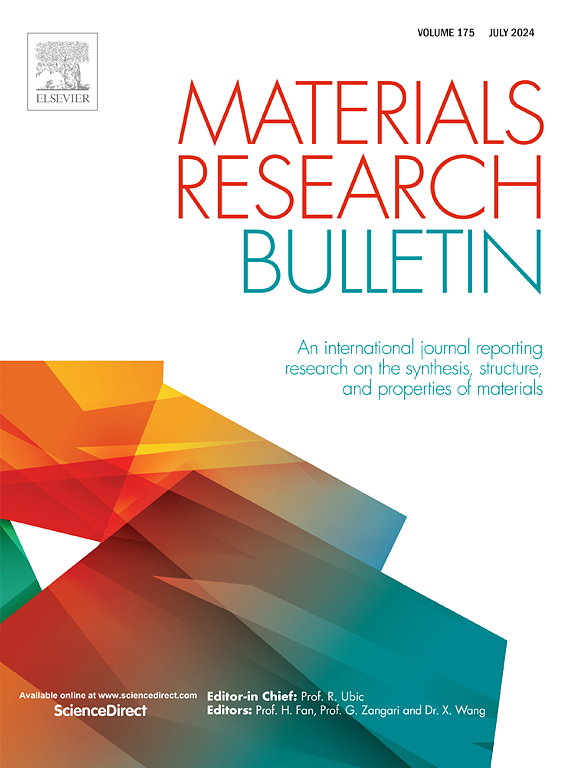Characterization of ternary ZrHfN thin films deposited by closed-field dual-cathode DC unbalanced reactive magnetron sputtering: A preliminary investigation on their reusable SERS with high thermal stability
IF 5.3
3区 材料科学
Q2 MATERIALS SCIENCE, MULTIDISCIPLINARY
引用次数: 0
Abstract
The zirconium hafnium nitride thin films as alternative plasmonic sensing for surface-enhanced Raman scattering substrate (SERS) were fabricated by closed-field dual-cathode DC unbalanced magnetron sputtering within a thickness range of 30–70 nm. The influence of film thickness on morphology and structural was investigated by grazing-incidence X-ray diffraction (GIXRD) and field-emission scanning electron microscopy (FE-SEM). The GIXRD results indicated that all the prepared ZrHfN thin films exhibited face-centered cubic structures. Surface-sensitive methods like X-ray photoelectron spectroscopy (XPS) and X-ray absorption spectroscopy (XAS) were employed to understand the chemical composition and the distribution of nitrogen atoms. Furthermore, the SERS performance of the ZrHfN films was evaluated using Rhodamine 6 G (R6 G) as a probe molecule. It was found that the 70-nm ZrHfN thin film demonstrated a SERS enhancement factor of 5.4 × 105 and high reusability (15 cycles). Additionally, our SERS substrates exhibited high thermal stability, which maintains sensitivity after heat treatment at 250 οC for 10 min in air ambient. These results highlight the potential of the ZrHfN thin film as an alternative SERS sensor chip for real-world applications.

求助全文
约1分钟内获得全文
求助全文
来源期刊

Materials Research Bulletin
工程技术-材料科学:综合
CiteScore
9.80
自引率
5.60%
发文量
372
审稿时长
42 days
期刊介绍:
Materials Research Bulletin is an international journal reporting high-impact research on processing-structure-property relationships in functional materials and nanomaterials with interesting electronic, magnetic, optical, thermal, mechanical or catalytic properties. Papers purely on thermodynamics or theoretical calculations (e.g., density functional theory) do not fall within the scope of the journal unless they also demonstrate a clear link to physical properties. Topics covered include functional materials (e.g., dielectrics, pyroelectrics, piezoelectrics, ferroelectrics, relaxors, thermoelectrics, etc.); electrochemistry and solid-state ionics (e.g., photovoltaics, batteries, sensors, and fuel cells); nanomaterials, graphene, and nanocomposites; luminescence and photocatalysis; crystal-structure and defect-structure analysis; novel electronics; non-crystalline solids; flexible electronics; protein-material interactions; and polymeric ion-exchange membranes.
 求助内容:
求助内容: 应助结果提醒方式:
应助结果提醒方式:


